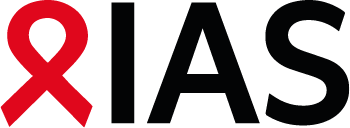Share Abstract
HAART in children and adolescents in Latin America: relationship between viral load and clinical characteristics from the national institute of child health and human development international site development initiative (NISDI) pediatric study
Abstract Content:
Background: A goal of combination antiretroviral (ARV) therapy is to control viral replication to levels below detection, with the intent of decreasing clinical disease progression. Achieving such levels may be less common in children than adults, in part because of the high viral load (VL) in children. We compared 12-month clinical outcome of children on HAART in NISDI by VL (< vs >400 copies/mL= DETECT vs UNDETECT).
Methods: NISDI is a prospective observational study of HIV-exposed and infected children enrolled at 14 sites in Mexico, Argentina and Brazil. We evaluated the relationship between VL and clinical outcome (defined as any Stage 3/4 event from 2005 Interim WHO Pediatric Clinical Staging of HIV/AIDS) in 345 children aged <1-19 years receiving HAART at enrollment and with follow-up for 12 months.
Results: At enrollment, 36.9% had UNDETECT and 63.1% had DETECT VL. After 12 months of follow-up, 43 of 345 (12.5%) children had Stage 3/4 events. Among 168 children with DETECT VL both at enrollment and at 12 months (median 16,280 copies/ml), 13.1% experienced either a Stage 3/4 event, compared to 8.4% (9/107) with UNDETECT VL at both time points (p=0.32). There were no differences in frequency of Stage 3/4 events according to gender or age at HIV diagnosis. Almost half of all events occurred in subjects with normal age-adjusted CD4 cells. More children with UNDETECT VL had CD4 > 25% compared to those with DETECT VL (p<0.01). No deaths occurred during follow-up.
Conclusions: In this preliminary analysis, ARV-experienced children maintained on HAART with persistently DETECT VL had a similar proportion of disease progression compared to those with UNDETECT VL. These data suggest that ARV-treated children, particularly those with limited therapeutic options, may not require immediate ARV change when they have DETECT VL.
Methods: NISDI is a prospective observational study of HIV-exposed and infected children enrolled at 14 sites in Mexico, Argentina and Brazil. We evaluated the relationship between VL and clinical outcome (defined as any Stage 3/4 event from 2005 Interim WHO Pediatric Clinical Staging of HIV/AIDS) in 345 children aged <1-19 years receiving HAART at enrollment and with follow-up for 12 months.
Results: At enrollment, 36.9% had UNDETECT and 63.1% had DETECT VL. After 12 months of follow-up, 43 of 345 (12.5%) children had Stage 3/4 events. Among 168 children with DETECT VL both at enrollment and at 12 months (median 16,280 copies/ml), 13.1% experienced either a Stage 3/4 event, compared to 8.4% (9/107) with UNDETECT VL at both time points (p=0.32). There were no differences in frequency of Stage 3/4 events according to gender or age at HIV diagnosis. Almost half of all events occurred in subjects with normal age-adjusted CD4 cells. More children with UNDETECT VL had CD4 > 25% compared to those with DETECT VL (p<0.01). No deaths occurred during follow-up.
Conclusions: In this preliminary analysis, ARV-experienced children maintained on HAART with persistently DETECT VL had a similar proportion of disease progression compared to those with UNDETECT VL. These data suggest that ARV-treated children, particularly those with limited therapeutic options, may not require immediate ARV change when they have DETECT VL.
